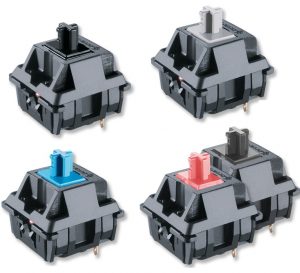Comprehending the Performance of Membrane Layer Changes for Interface Instruments
The performance of membrane switches over stands for a considerable advancement in user interface design, incorporating performance with visual flexibility. These switches run through a multi-layered framework that equates customer communications right into electrical signals, enabling both small designs and strength against environmental aspects. As markets increasingly prioritize user experience, understanding the subtleties of membrane layer switch modern technology comes to be necessary. What effects do these advancements hold for future applications, and just how might they redefine customer interactions across different tools?
What Are Membrane Layer Buttons?
Membrane switches are ingenious interface devices that promote customer interaction with electronic devices. These flexible components consist of several layers, consisting of a graphic overlay, spacer, and a published circuit layer. The style allows for a seamless assimilation into numerous electronic tools, enhancing both the aesthetic and practical aspects of interface.
Membrane layer buttons are typically employed in a variety of applications, from house home appliances to industrial equipment and clinical gadgets. Their building and construction usually features a thin account, making them an ideal choice for small styles. The responsive responses offered by these switches can be crafted to meet details user preferences, making certain efficient communication between the user and the device.
Longevity is another considerable advantage of membrane buttons, as they are resistant to dirt, moisture, and chemicals, which improves their life expectancy popular environments. Furthermore, these buttons can be personalized in terms of form, size, and graphic layout, enabling branding and user-specific functions. In general, membrane switches over represent a sensible solution for boosting customer experience in digital gadgets, integrating performance with aesthetic appeal in a reliable manner.
Just How Membrane Layer Switches Work
Operating on a simple concept, membrane switches make use of a split building and construction to sign up individual input efficiently. Each button includes multiple layers, including a published circuit layer, a spacer layer, and a top graphic layer, which are developed to interact perfectly. When a user presses the leading layer, it compresses the spacer layer, bringing the conductive elements of the circuit layer right into contact with each other.
This contact develops a closed circuit, indicating the device to implement a certain feature. The layout permits different setups, consisting of responsive comments, which can enhance the user experience by providing a physical experience upon activation. The materials used in membrane buttons often include adaptable substrates, such as polyester or polycarbonate, which make certain toughness and resilience versus damage.

Secret Advantages of Membrane Layer Buttons

An additional significant advantage is their compactness. Membrane layer switches are slim and light-weight, which allows manufacturers to save room in their gadgets without giving up functionality. This feature is particularly advantageous in applications where weight and quantity are important considerations.
Furthermore, membrane layer switches are immune to dirt, wetness, and chemicals, enhancing their longevity. This strength extends their life-span and minimizes the requirement for regular substitutes, resulting in cost financial savings with time.
Additionally, the responsive feedback supplied by membrane buttons can be enhanced to boost user communication. They can include functions such as raised buttons or distinct clicks, improving functionality and customer experience.
Applications Across Industries
Interface tools using membrane switches are common in a wide selection of industries, showcasing their versatility and performance. Membrane Switch. In the medical field, membrane buttons are essential to devices such as analysis devices and client monitoring systems, where their resilience and ease of cleaning are crucial for keeping hygiene standards. In the automotive market, these buttons are employed in control panel controls and infotainment systems, providing a streamlined and modern user interface for individuals.
In addition, the consumer electronics sector take advantage of membrane switches in devices and portable gadgets, where small design and easy to use interfaces enhance customer experience. Industrial applications additionally take advantage of membrane layer switches for control board in machinery and automation systems, emphasizing their toughness and special info resistance to rough environments.
In the aerospace and defense industries, membrane switches are used in cockpit get more controls and devices, where reliability and performance under extreme problems are vital. Furthermore, the gaming market increasingly includes membrane switches in controllers and gallery machines, adding to an interesting user experience. On the whole, the convenience of membrane switches allows their widespread usage throughout numerous fields, underscoring their significance in contemporary individual interface design.
Future Patterns in Membrane Switch Technology

Furthermore, using innovative products, such as polycarbonate and polyester movies, is expected to rise, supplying enhanced longevity and resistance to environmental stress factors. These products add to the overall long life of membrane layer switches, making them suitable for harsher commercial applications.
Furthermore, the unification of clever technology, consisting of IoT connection, will make it possible for membrane buttons to interact with other tools and systems, promoting a much more interactive customer experience. This fad aligns with the expanding demand for smart tools across numerous industries, from medical care to customer electronics.
Last but not least, customization choices are prepared for to increase, allowing makers to produce bespoke services customized to specific customer demands and preferences. These advancements will certainly position membrane buttons as important components important link in the advancement of interface technology.
Conclusion
To conclude, membrane layer changes stand for a crucial improvement in individual interface technology, supplying a reliable and versatile solution for diverse digital applications. Their split construction helps with portable layout, while functions such as tactile comments boost user interaction. The longevity versus ecological factors further solidifies their utility throughout numerous sectors. As developments in product science and touch sensing modern technologies proceed, the functionality and applicability of membrane layer buttons are anticipated to expand, strengthening their importance in contemporary electronic tools.